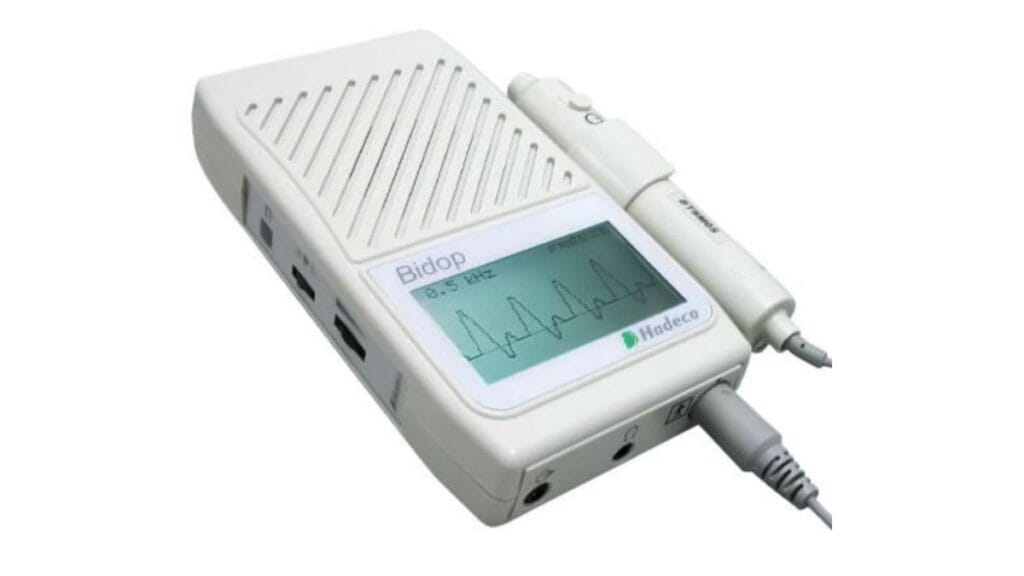Vascular Doppler Devices
Vascular Doppler uses high-frequency sound waves to measure the amount of blood flow through your arteries and veins, usually those that supply blood to your arms and legs. Vascular flow studies can help detect abnormal blood flow within a blood vessel.
Bidirectional Doppler
A bidirectional Doppler uses the Doppler shift technique to distinguish blood flow in both positive and negative directions, i.e., away from the probe or towards the probe. Using phaser technology, these devices simultaneously separate forward and backward flow signals by comparing phases and pass them on through two separate channels. These devices help in the qualitative assessment of blood flow using parameters such as the shape of the curve and the direction of flow. The use of a surgical probe along with a bidirectional Doppler provides increased access to the region being assessed.
Kodys Bidirectional Dopplers
Kody Medical Electronics, a leading manufacturer of diabetic foot care and wound care equipment, offers a wide range of vascular dopplers to cater to different needs.
ES-100VX Minidop, Bidop ES100V3, Smartdop 45, Bidop7, Hadeco Smartdop XT 6 Port, Hadeco Smartdop XT 14 Port, and Smartdop 30EX are popular bidirectional Doppler devices used widely in surgical practice. They find applications in neurosurgery, cardiovascular surgery, oral surgery, urology and nephrology, plastic surgery, and orthopaedic surgery.
Kody Medicals offers a wide range of surgical probes of different diameters that can be used at 10 and 20 MHz frequencies. These probes are used along with the Doppler devices to enhance performance and achieve excellent surgical outcomes.
Features and Applications in Preoperative Planning
KODYS Doppler devices have multifrequency compatibility and can be used with 10 and 20-MHz probes. The choice of probe depends on the sensitivity required and the location to be accessed. This probe plays a significant role in tracing the location and marking the superficial arteries and perforator flaps in Plastic surgery. It is used to mark the superficial temporal artery or other arteries before craniotomy procedure in Neurosurgery. It is used in the performance of a diagnostic test for peripheral arterial disease before Vascular Doppler.
Features and Applications in Surgical Intervention
Bidop 100V3 is similar to ES-100VX, with a colour display, a bigger speaker, and an inbuilt battery. It displays numerical parameters such as maximum velocity (cm/s), average velocity (cm/s), diastolic velocity (cm/s), systolic to diastolic ratio (SD), etc., which are of value while observing blood flow. Smartdop 45 is again very similar to Bidop 100V3 and ES-100V3 with the same features, with a thermal printer in addition.
All these Doppler devices find wide application in aneurysm clipping (finding the patency of blood flow pre- and post-clipping), pituitary tumour decompression (locating carotid artery in Endoscopic skull base surgeries), finding artery or blood flow during tumorectomy, etc. in neurosurgery; bypass surgery, detection of peripheral blood flow after surgery, etc. in cardiovascular surgery; lip and cleft palate surgery; varicocele and AV shunt in urology; perforator flap assessment and transplantation in plastic surgery; and determination of PAD and spinal stenosis in orthopaedic surgery.
The right choice of Doppler device from the wide range of devices available, combined with the appropriate surgical probe of the right dimension contributes to the accuracy of various surgical procedures, yielding excellent results.
Source Link: https://kodymedical.com/2024/01/30/the-role-of-vascular-doppler-in-preoperative-planning-and-surgical-intervention/





